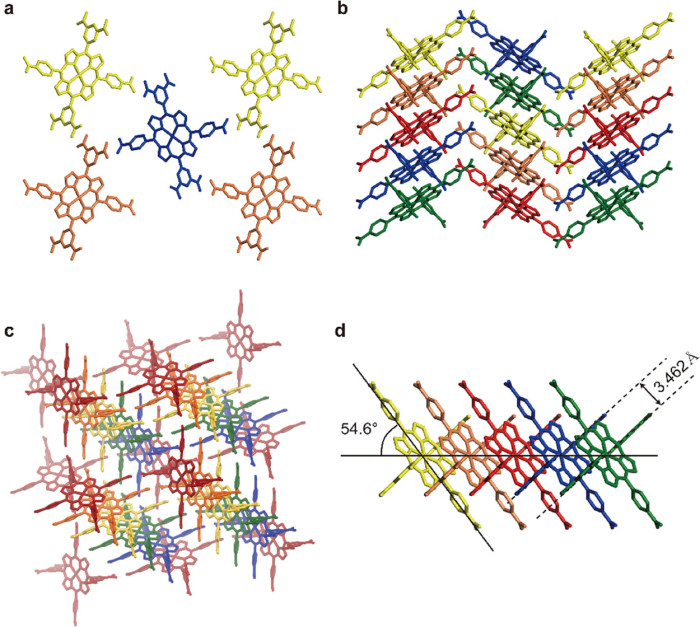“Retention of Intrinsic Photophysical Properties of Porphyrin Building Blocks in 3D Organic Frameworks through Magic Angle Alignment”
- Authors
J.H. Lee, H. Park, Y. Kim, D. Yim, T. Kim, J. Choi, Y. Lee, and W.-D. Jang
- Journal
ACS Applied Materials Interfaces
Vol.15(49), pp.57507-57513, 2024.02 - DOI
Abstract
Construction of three-dimensional (3D) frameworks maintaining intrinsic photophysical properties of monomeric building blocks is difficult and challenging due to the existence of various molecular interactions, such as metal–organic and π–π interactions. A 3D hydrogen-bonded organic framework (YSH-1Zn) with permanent porosity was constructed using a porphyrin having six carboxylic acid groups (1Zn). Brunauer–Emmett–Teller surface area measurement indicated that YSH-1Zn has a porous structure with a surface area of 392 m2/g. Single-crystal X-ray diffraction analysis revealed that 1Zn creates a 5-fold interwoven 3D network structure adopting a monoclinic system with a space group of P21/c. Each 1Zn within a single crystal exhibits parallel alignment with a slip-stack angle of 54.6°, in good agreement with the magic angle. Although the center-to-center distance of the nearest zinc atoms in YSH-1Zn is only 5.181 Å, the UV/vis absorption and fluorescence emission of YSH-1Zn are not different from those of 1Zn, indicating the absence of an interaction between excitons. Due to the magic angle alignment of 1Zn, the fluorescence lifetime, decay profiles, and quantum yield remained uniform even in the solid state.












